SIL Calcs 101: Beta Factor Application
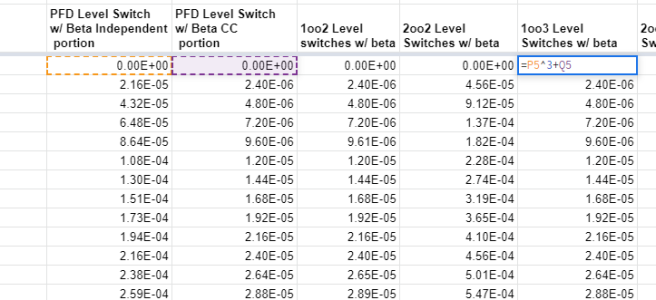
Beta Factor Application Examples.
Enough talk, lets model something.
Last time we went through an introduction to beta factors. The relevant equation to extract from that is:
So we have split lambda up into two pieces: a common cause piece and a piece representing independent (i.e things fail together by random chance alone) events. Each piece will evolve separately in time according to our basic equation:
This means we will be modeling two separate PFDs, the independent portion and the common cause portion.
Getting Set Up Permalink
Open up your spreadsheet and setup a couple of cells to automatically split lambda based on beta, as shown below. We will assume we want to apply a 10% beta factor to the level switches.

All I did here was set:
and
Remember that these two pieces should sum to the original value of lambda!
Modeling The Pieces Permalink
First, lets model the independent portion of lambda. We use our familiar (hopefully) basic equation, like so:
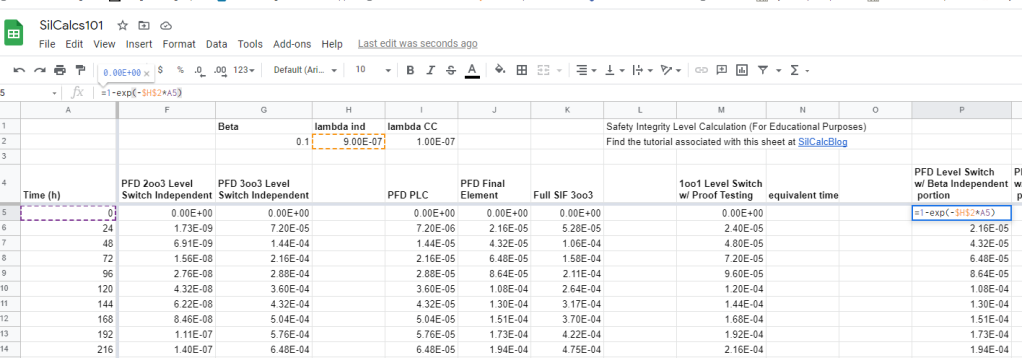
Next, model the common cause portion of lambda, like so:

The Main Idea Permalink
In general, we are going to consider the PFD due to common causes as its own entity, and we are going to take it’s union with the PFD we get from modeling our voting structure. You will see what we mean as we go through.
1oo2 Voting w/ Beta Permalink
Let’s start by recalling how we model 1oo2 voting for independent events. From our handy table:
Now we union this with the PFD that results from modeling our λCC :
Set this up like so:
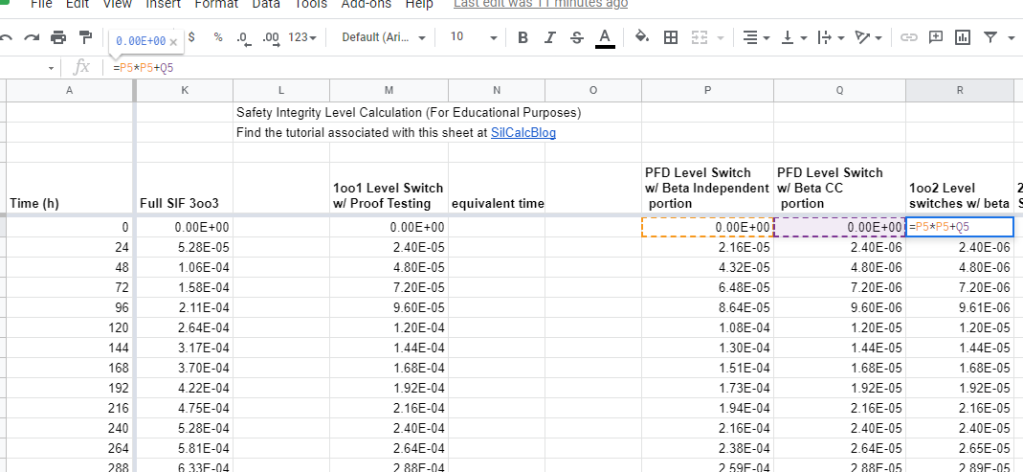
That’s it! We’ve modeled a system that includes beta. Nothing to it. Notice that the PFD average for the 1oo2 system (shown below) with beta is larger than the PFD average for a 1oo2 system without beta. This is completely as expected, check out the previous post if you need the details.

2oo2 Voting w/ Beta Permalink
As mentioned previously, we don’t typically model beta in MooM systems in practice—because doing so would cause PFD average to decrease, which is a non-conservative result. That being said, I think it’s worth walking through the calculation once so that you can see the mechanics of how PFD average gets decreased, and also get in some extra practice doing calculations with beta.
First, recall our equation for modeling 2oo2 voting with independent events:
Now union this with the common cause PFD:
Set up your spreadsheet like so:

Notice that, as expected, the PFD average of the 2oo2 system with beta is less than the PFD average of the system without beta.
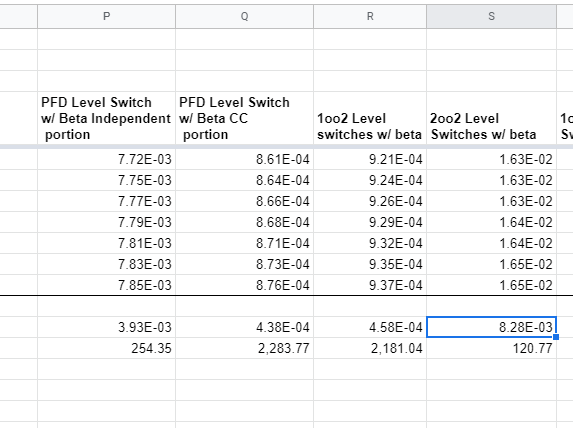
1oo3 Voting w/Beta Permalink
Alright lets do another! Recall the 1oo3 voting formula:
Now union with the common cause PFD:
Set up like so:

Results:

3oo3 Voting w/ Beta Permalink
Recall the equation for independent case (note that I assumed all three level switches had identical lambdas here, and so condensed the equation due to space constraints):
Union with the common cause:
Set up spreadsheet like so:

Results:
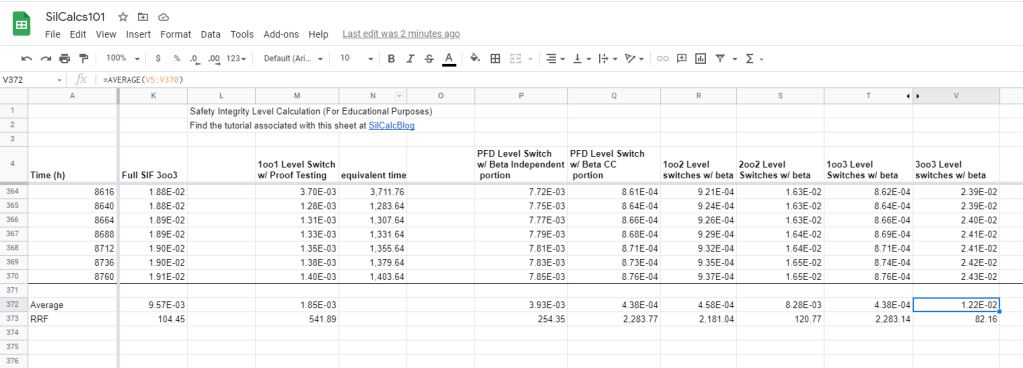
What’s Next Permalink
That’s it for the introductory series, hopefully you have a basic handle on how to do some of this stuff now.
Next up, I am thinking a post on calculating proof test coverage would be useful.